Introduction
Moving large industrial generators can be a complex and delicate process. These machines ensure uninterrupted power supply in factories, hospitals, data centers, and other critical facilities. Proper planning and execution are essential to prevent damage to the equipment and avoid safety risks. This guide provides a comprehensive look at preparing, moving safely, and reinstalling generators.
Contact Sullivan Industrial Services when you need to move a Generator!
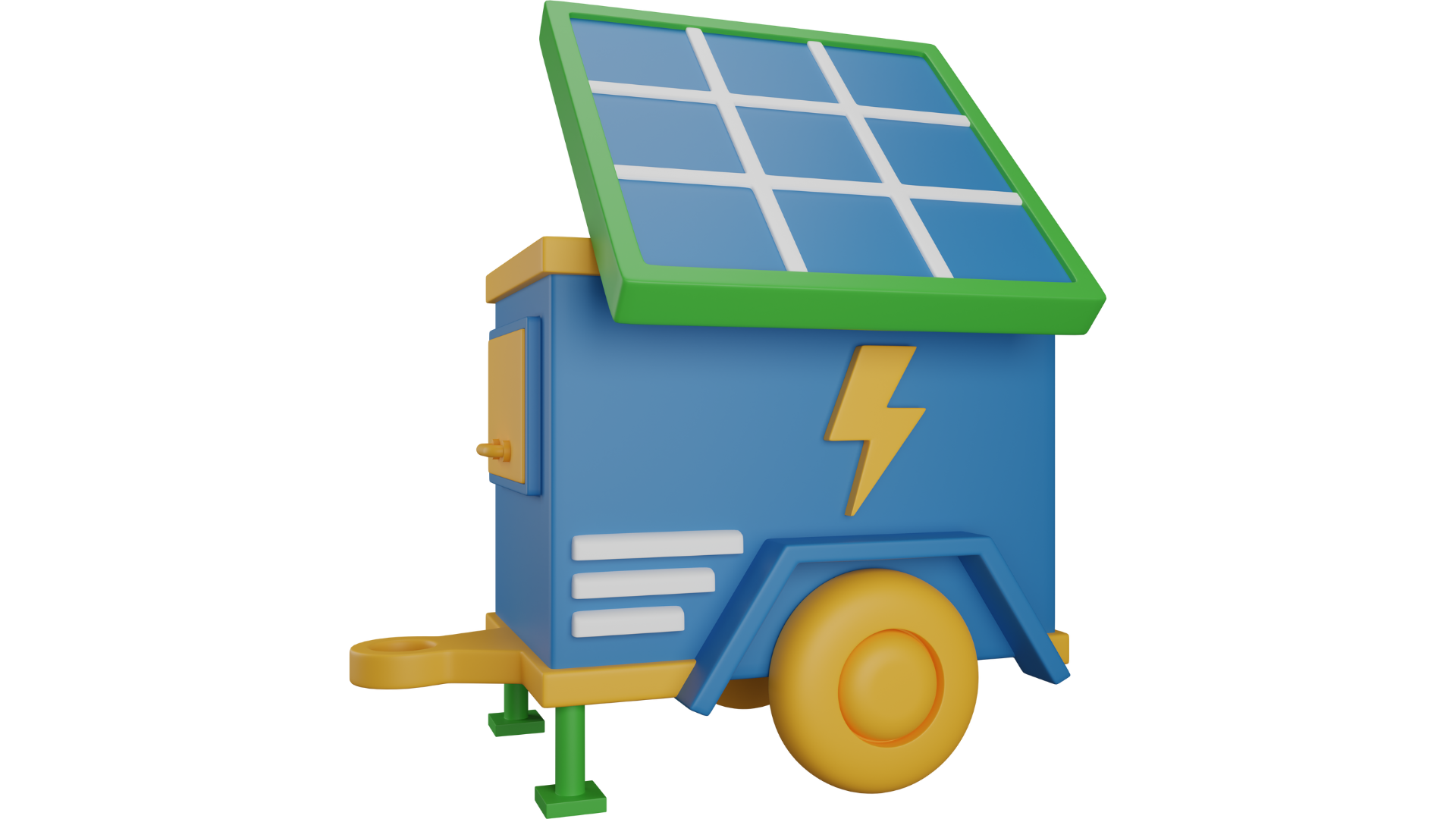
Pre-Move Planning
Effective planning is critical to a smooth generator move. Whether relocating a generator to a new facility or upgrading an existing one, pre-move preparation ensures you know all possible challenges.
Site Evaluation
Before you can even begin to move a generator, it’s essential to evaluate the current site and the destination. Ask yourself:
- Are there access points large enough to move the generator?
- Are there obstructions such as low-hanging wires or narrow passages?
- What type of surface will the generator be transported over (concrete, gravel, etc.)?
An in-depth site evaluation will help determine the equipment you need, such as forklifts, cranes, or specialized trailers. If there are height or width restrictions, the generator might need to be disassembled or reconfigured for the move.
Understanding Weight and Dimensions
Generators come in various sizes, from small portable units to massive industrial machines weighing several tons. Before the move, you must have detailed knowledge of the generator’s weight and dimensions. This information will help you:
- Choose the correct transportation method.
- Ensure the integrity of loading docks, floors, or ramps during the move.
- Avoid damaging the generator or surrounding structures.
Also, confirm that all personnel involved are aware of these specifications.
Regulatory Requirements
Different regions have different regulatory guidelines for moving heavy machinery. Depending on the size and weight of your generator, you may need special permits for road transport, especially for oversized loads. Additionally, check for environmental regulations related to noise, emissions, or hazardous materials if your generator runs on diesel or another fuel.
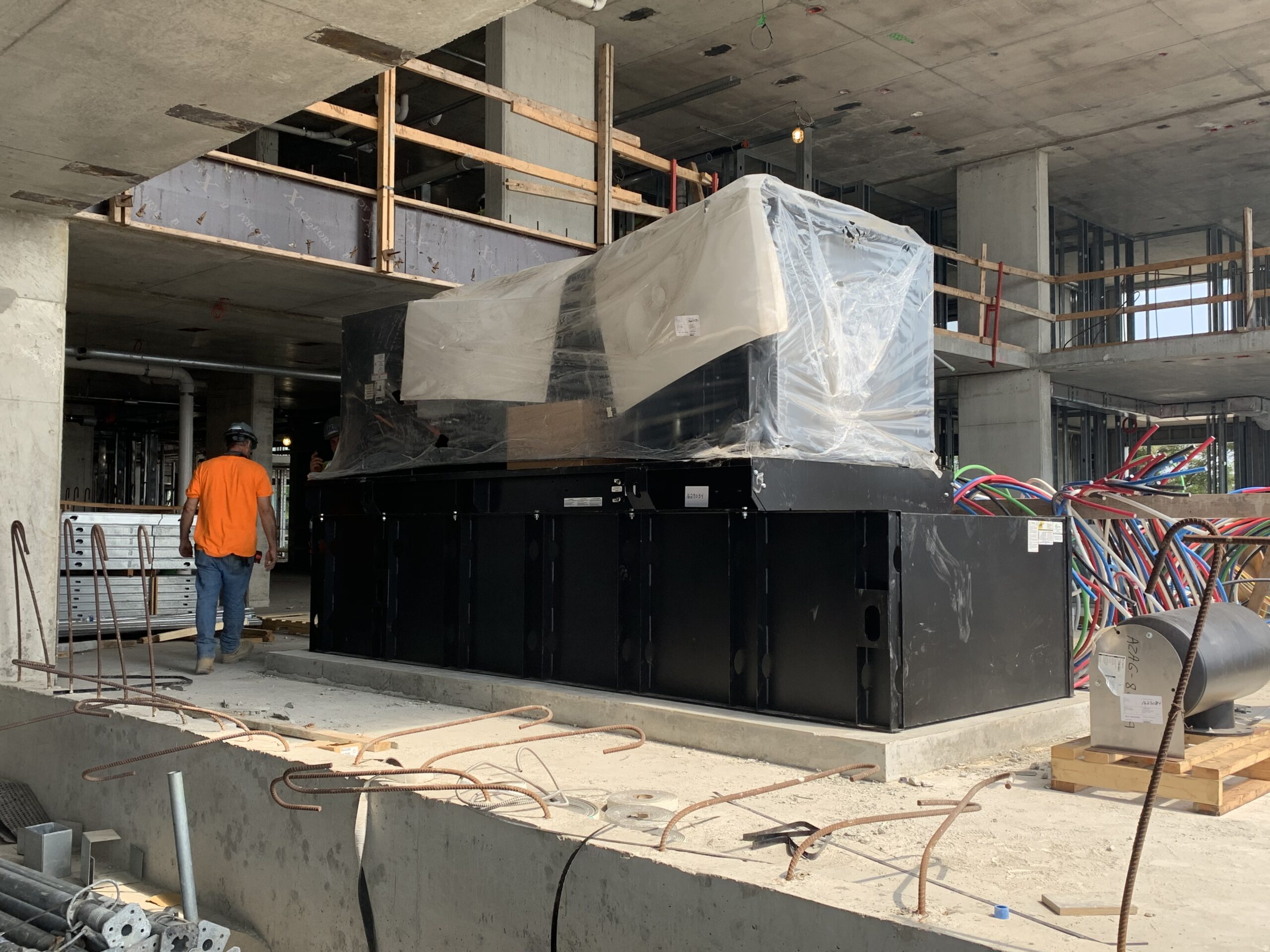
Equipment Needed
Having the right equipment is critical for a successful generator move. Inadequate tools can result in safety hazards or damage to the machinery.
Moving Trucks & Trailers
Large flatbed trucks or lowboy trailers are often required to transport heavy generators. These trailers can support the generator’s weight and are designed to handle uneven terrain or steep inclines. Standard enclosed trailers may suffice for smaller generators.
Cranes & Forklifts
For loading and unloading, you’ll likely need cranes or forklifts. Forklifts are typically used for smaller, mobile generators, while cranes are used to lift large industrial units. Make sure the lifting equipment is rated for the weight of the generator. Using improperly rated equipment could lead to accidents.
Riggers and Skates
Professional rigging equipment, including skates (rolling platforms) and winches, may be needed to move a generator within tight spaces or over short distances before loading onto a truck. Riggers are used to ensure the load stays balanced during the move.
Preparing the Generator for Transport
Preparing the generator before moving it is crucial to avoid damage. Proper preparation ensures that the generator will typically function once reinstalled at the new site.
Disconnection from Power Source
First, ensure that the generator is entirely disconnected from the power source. This step is crucial for standby generators used in critical facilities. Follow these steps:
- Power down the generator and allow it to cool.
- Disconnect the fuel supply, if applicable.
- Unplug all electrical connections and label them to facilitate reinstallation.
Securing Moving Parts
Many generators have moving parts and covers, that must be secured before the move. Any loose parts should be fastened or removed to prevent damage during transport. Ensure that the generator’s external frame is stable and locked in place.
Empty Fluids (if applicable)
For larger generators, especially those using diesel or oil, you may need to empty the fluids before transport. Spilled fuel or oil can be hazardous and may also damage the generator’s internal components during movement. Consult the manufacturer’s manual for specific guidelines on safely draining fluids
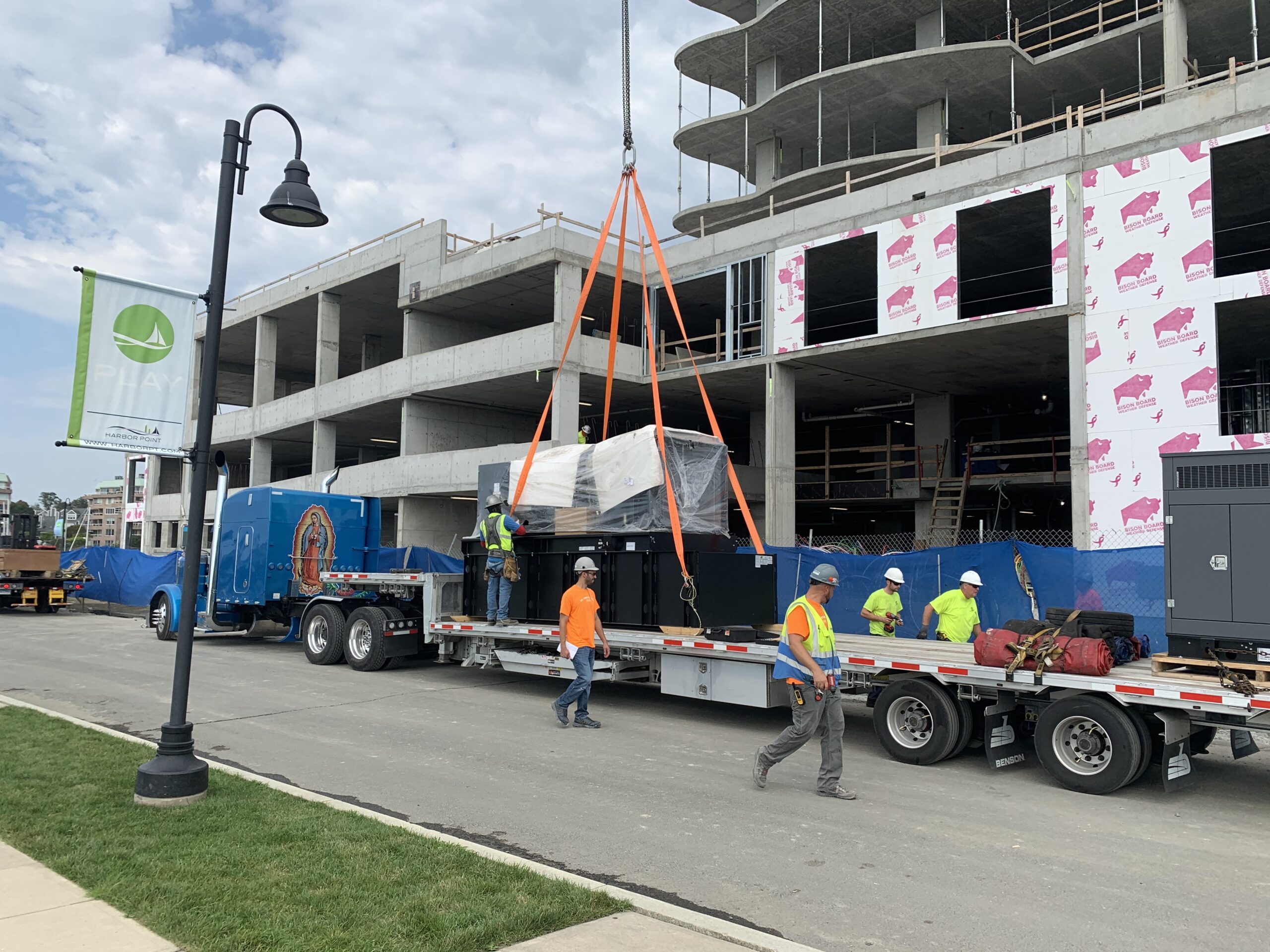
Transporting the Generator
Once the generator is prepared correctly, the actual transportation phase begins. Safety is the top priority during this phase to avoid accidents, delays, and damage.
Loading the Generator
When loading a generator onto a truck or trailer, ensure it is securely fastened using industrial-grade straps or chains. The generator should not move or shift during transport, which could cause significant damage. If using a crane, always follow the proper rigging techniques to prevent tipping or imbalance.
Transportation
Ensure the driver is experienced with hauling heavy loads and understands the unique challenges posed by the weight and size of industrial generators. Plan the route ahead of time, considering:
- Bridges with weight restrictions.
- Narrow or low-clearance roads.
- Traffic patterns and potential detours.
You may need a pilot vehicle to guide the truck and ensure safe passage for oversized generators.
Moving Commercial Generators Across CT & the North East
Reinstallation at the New Location
Once the generator reaches its destination, the reinstallation process begins. Just as in the preparation phase, precision is critical here.
Positioning the Generator
Double-check the site’s measurements and structural integrity before placing the generator in its new location. Once the generator is in place, secure it to its foundation using anchor bolts or other securing mechanisms, depending on the surface.
Reconnecting Power & Fuel Supply
Licensed professionals must reconnect the generator to the electrical grid or standalone power systems. They must ensure that all wires are properly labeled and connected and restore the fuel supply if applicable. Before putting the generator back into regular use, they must conduct a test run to ensure everything is functioning properly.
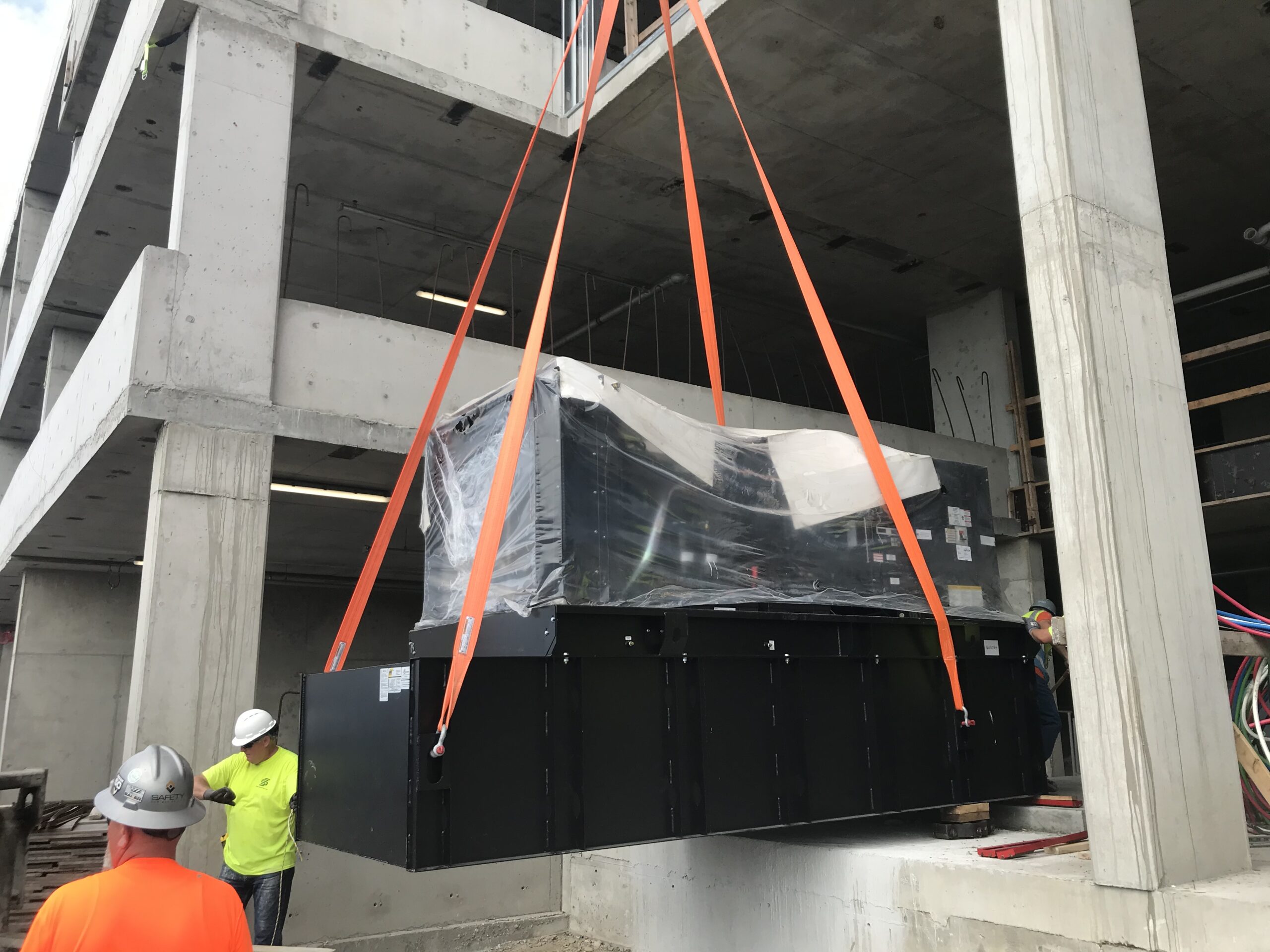
List of Common Generators
Here’s a list of standard large industrial generators that people may need to move:
- Diesel Generators: These are the most common industrial generators, powered by diesel fuel and known for their reliability.
- Natural Gas Generators: Environmentally friendly and efficient, these generators are often used in locations with access to natural gas lines.
- Turbine Generators: These generators use steam, water, or gas turbines to generate electricity, often used in power plants.
- Bi-Fuel Generators: These systems can run on two types of fuel (diesel and natural gas), offering flexibility in operation.
- Portable Industrial Generators: Though smaller, these generators are commonly used for temporary power at construction sites or events.

Conclusion
Moving a generator is a complex task that requires careful planning and specialized equipment and Sullivan Industrial Services can help. We understand the steps involved, from pre-move planning to reinstallation, can ensure a smooth and safe process. Our team ensures your job follows all regulatory guidelines & avoids costly errors, ensuring the generator is ready to serve its purpose once relocated.
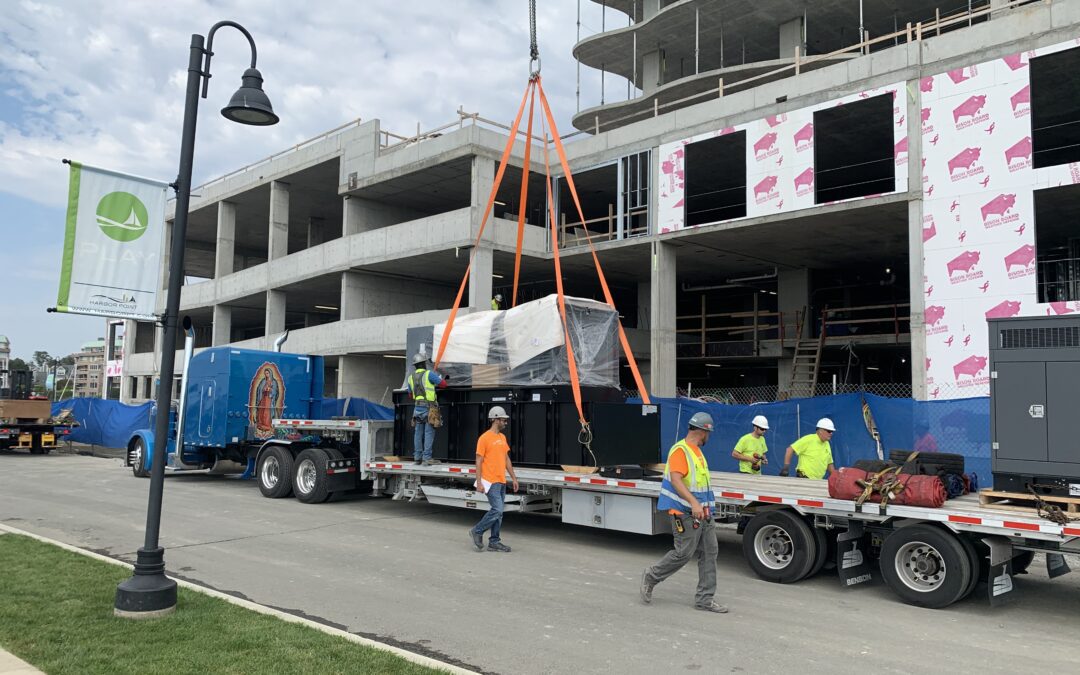
Recent Comments